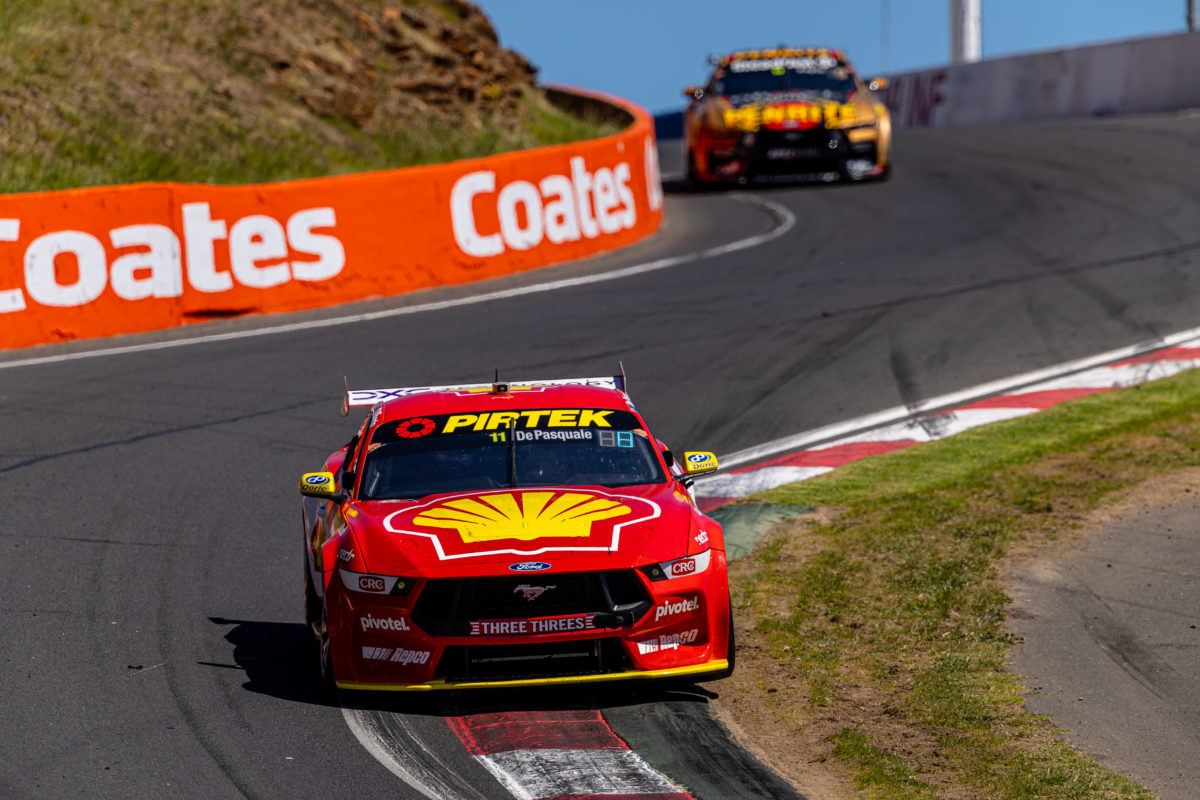

After one of the most controversial Bathurst 1000 build-ups in history, the Great Race came down to a battle between three Chevrolets, with Fords trailing.
As such, we ask in this week’s Pirtek Poll, should Supercars have handed the Mustang a parity adjustment at Bathurst or not?
Ford teams rang the alarm bells on practice day at the Sandown 500, an event which ended with a Camaro podium lockout, and continued to agitate for an adjustment to the Mustang’s aerodynamic package on set-up day at Mount Panorama.
After a series of meetings, their request was ultimately turned down, a decision for which Supercars cited the parity trigger point having not been hit by then, and lack of consent from all other (Chevrolet) teams.
With that, the acrimony subsided somewhat, although Ford drivers still made several pointed remarks consistent with their dissatisfaction at the parity situation.
Then, six Mustangs made the Top 10 Shootout and, while Brodie Kostecki charged to pole position by a margin of almost half a second, the second-best Camaro (Broc Feeney) was barely more than two hundredths of a second quicker than the best Mustang (Cam Waters).
So it was that Triple Eight Race Engineering’s Red Bull Ampol Camaros and the #99 Erebus Motorsport Camaro quickly emerged as the real prospects for victory – a not dissimilar scenario to how the broader championship season has transpired – and those three entries would have filled the podium if not for a gear lever mount failure for Broc Feeney.
Should Supercars have proactively approved a change before the Bathurst 1000?
No, one might argue, because rules are rules.
The parity trigger may or may not be part of the Teams Racing Charter – indications are it is not – but it was good enough to be relied upon as justification for the post-Hidden Valley parity review.
Ford figures might say that validation work conducted on Dick Johnson Racing’s wildcard Mustang proved that the change was necessary, but Chevrolet counterparts argued that the Blue Oval was trying to ram through an unfair advantage for its car.
They also argue that it is possible to mimic the Camaro aero package with some basic set-up tweaks on the Mustang.
Ford, though, claimed that their proposed aero adjustments were developed from CFD data which was only provided to the homologation teams on August 24, weeks after the Townsville event which saw the introduction of the most recent tweaks.
On that basis, one could make the argument that Ford and homologation team DJR were flying blind in June/July and hence a discretionary parity change at Bathurst was justified under the circumstances.
In response to that suggestion, however, one Chevrolet figure reasoned to Speedcafe that Ford/DJR had a chance to see the Camaro before they developed the S650 Mustang aero package.
The Gen3 prototypes broke cover in December 2021, the Mustang as an S550, but the S650 was launched in September 2022, before a VCAT that year and a ‘mini VCAT’ in February this year.
Homologation teams were told to bring a kit of parts and data was shared amongst them, so, said Chevrolet figure asks, if Triple Eight apparently managed to get their package right, then how did Ford/DJR not?
What do you think? Should the Ford Mustang have been given a parity adjustment for the Bathurst 1000? Cast your vote below in this week’s Pirtek Poll.





















Discussion about this post